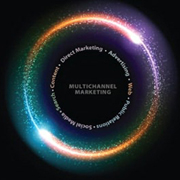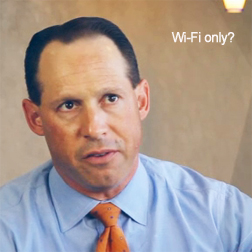When psychologists from the University of Western Australia, University of Michigan, and University of Queensland released their
abstract on misinformation, I was especially interested in reading their conclusions and solutions. They didn't have many solutions. The ones they did have sounded like entry level public relations. It isn't enough.
The psychology perspective on managing misinformation.
• Provide people a narrative to fill the gap left by misinformation.
• Focus on the facts you want to highlight, rather than the lies.
• Keep new information simple and brief in its telling.
• Consider your audience and their pre-existing beliefs.
• Strengthen your message through repetition.
None of it is wrong, per se. But all of it can make any misinformation about you, your department, or your company worse. Managing misinformation requires much more than casual interpretation of multiple studies. For comparison, consider five tenets from crisis communication.
The crisis communication perspective on managing misinformation.
• Talk about it as soon as possible.
• Tell the whole truth, even if it means bad news, negligence, or wrongdoing.
• Be clear and concise, addressing details without obscuring the situation.
• Offer full disclosure of all relevant facts, history and related information.
• Demonstrate empathy or remorse as appropriate to the situation.
These tenets are a step up, but even these aren't perfect. Any crisis caused by misinformation requires a delicate hand, much like
managing bad news. While you can use almost any model from public relations or crisis communication as a guide, professionals have to develop plans unique to the situation.
Specifically, the abstract misses the finer points, as do the tenets. A temporary narrative is fine while an investigation takes place, but most publics will assume it's a cover up unless you have a definitive deadline to get to the truth. Focusing on the facts is always a good idea, but sometimes a correction creates the impression that there is some validity to the misinformation. Considering the audience is smart, but information cannot be contained — everything has the potential to go global. Strengthening a message through repetition sounds good, but it can make the
crisis live longer than needed.
A deeper look into understanding misinformation management.
•
Establish the truth before misinformation. Far too many companies don't see a "tangible" return on investment for critical communication components like branding, public relations, and social media because the ROI is relatively soft compared to direct response that delivers concrete numbers. Unfortunately, those concrete numbers dissipate like quicksand compared to long-term reputation.
The narrative that psychologists suggest ought not be a reactionary measure, but a preventative one. Businesses with well-established brands are not exempt from misinformation being spread about them, but they are given a longer timeframe to investigate and prepare a defense as needed. Once you have a strong brand, do not deviate from it. You reinforce it with words and actions.
Brands are fragile.
•
Choose A Suitable Level Of Response. One of the most challenging aspects of any potential misinformation crisis, real or imagined, is to determine whether it needs to be left alone or if it needs to be addressed straight away before it spreads. One negative review left by a competitor under an assumed name requires very little action against the weight of 50 positive reviews.
However, if it needs to be addressed, attempt to address it with those exposed as quickly as possible while preparing for a possible escalation. For example, if the questionable review is on Yelp, address it there not on YouTube. The point is that any time someone addresses misinformation, it is an acknowledgement that there might be some truth to it or that the organization can be damaged by it. The weight of any counter measure determines the
importance of the misinformation.
•
Prioritize the facts and keep it simple. One of the areas where the abstract shined was in illustrating how
misinformation has an advantage because it is simple. A simple message almost always sticks better than a complex message. If someone needs 12 paragraphs to explain why five words are a lie, it's an uphill battle. Likewise, a one-point sound bite sticks better than 12.
And yet, sometimes the best solution is to have three or four related and reinforceable points that can be changed out depending on the audience without alienating the larger global audience. Years ago, when helping facilitate the first
flood control detention basins in the area, we developed several points to appeal not only to specific audiences but also to different people within the same audience. Resident concern was based on losing views, property value loss, and construction hassles. Our primary points were safety, aesthetics, public participation, and long-term property values (floods kill property values, not detention basins). We didn't have to negate or agitate detractors. We developed a partnership of trust.
•
Empathy is an emotional appeal. As the abstract correctly illustrated, misinformation tends to win because it elicits an emotional reaction as opposed logical argument. It doesn't have to be this way.
Sometimes facts naturally exhibit an emotional appeal. Sometimes they don't. When they don't, empathy carries an emotional appeal for a logical argument. Ergo, it is possible to acknowledge that some people might believe misinformation (without vilifying them) and move to the truth.
In the abstract, for example, they point to the "myth" about death panels being built into the national health care program. While the psychologists dismiss it outright, they neglected to note that the proponents of national health care resorted to diatribe rather than address the underlying questions about oversights, caps, and other controls. The truth was somewhere in the middle of misinformation and not many people were up to the challenge of pursuing it. An objective analysis was needed.
•
Reinforce, but be wary of repetition. No one can drive the truth home with a sledgehammer. Simply presenting the truth over and over will not make people believe it. On the contrary, overzealous repetition has an equal opportunity to entrench opponents or reinforce the myth. It almost goes along with a marketing adage. Those who oversell have nothing to sell.
Addressing misinformation and managing it effectively requires more than a reaction. It requires action. Once the misinformation is addressed, assuming the evidence is objective and accurate, stop addressing the myth and move on to accurate messages that ought to have been part of the brand before it was challenged.
For example, as Apple makes corrections to its
Maps program, shoring up its brand will require new demonstrations that it is still about innovation and not slipping into a model of production that so many other companies subscribe to. The worst thing it could do is keep talking about it — long after a resolution or the fervor of one blatant jump-the-gun mistake.
Misinformation isn't always bad, assuming it didn't come from you.
There are two things to think about misinformation. The first is to avoid being the source of it, which was the primary point of the previous article on this subject. People need to work harder at developing objectivity as a skill set, especially while the media has slipped in this arena.
Author Gore Vidal once addressed this topic, citing a student of Confucius who asked what would be the first thing Confucius would do as emperor. Vidal said Confucius was quick to answer.
"I would rectify the language. If people do not understand the emperor, there is no nation. Now that lying is the usual discourse of our rulers, we cannot grasp any reality from the true cause of hurricanes to the lies used to compel us into disastrous wars."
While Vidal was talking about blatant lies, not all misinformation is crafted out of blatant manipulations and fabrications. Most of it is derived from either an overall brand weakness, the lack of clear and accurate information, or arrogance in the belief that the public cannot be appealed to with logical discourse. But as such, this kind of misinformation need not be the cause of panic, but an opportunity.
Even within the psychologists' study, you can see it. If you ask yourself objectively why climate change, national health care, or even a birth certificate fiasco became fodder for what is called misinformation, you will inevitably find the contentions grew out of overreaching data, lack of details, or an initial unwillingness to provide evidence. The cause wasn't detractors. It was the proponents who provided cracks, hoping to appeal to emotional reactions over logical discourse, perhaps because the truth wasn't as patently accurate as they wanted people to believe.
Just as shadows cannot grow in brightly lit rooms, misinformation cannot rise out of truth alone. As communicators, we must continually strive to turn on lights to eliminate shadows rather than be tempted to turn them off and add more shadows of our own. No good ever comes from it. Only darkness.
 While Dr. Healy and her team are currently extending this research into multiple workplaces to examine the most feasible and acceptable ways to reduce prolonged sitting, these studies need to be expanded to consider other areas that corporations and small businesses will notice.
While Dr. Healy and her team are currently extending this research into multiple workplaces to examine the most feasible and acceptable ways to reduce prolonged sitting, these studies need to be expanded to consider other areas that corporations and small businesses will notice.






































